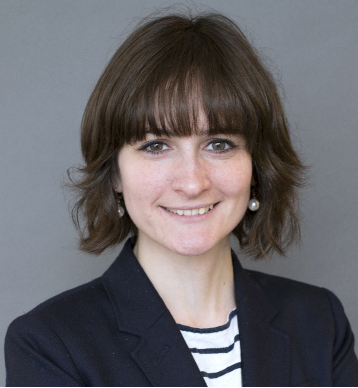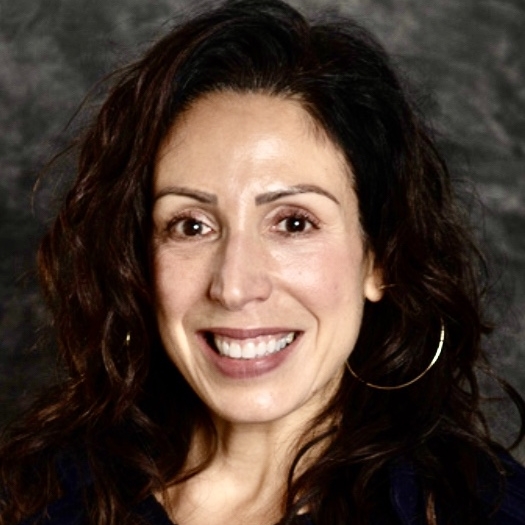The Series Podcast Objectives are:
-
Understand how the medical affairs strategic planning process can drive decision making throughout the year
-
Gain insight into the value medical affairs bring across an organization when an effective, collaborative, aligned medical strategy plan is developed
-
Obtain a working knowledge of how cross-functional teams within medical affairs can reference strategic plans to inform decision making and assess impact of efforts

MODERATOR: Monica DeAbadal, MD, MBA/HSA

SPEAKER: Pete Piliero, MD

SPEAKER: Eileen K Sawyer PhD

SPEAKER: Len Valentino, MD

SPEAKER: Anna Walz
Following is an automated transcription provided by otter.ai. Please excuse inaccuracies.
Monica de Abadal
Welcome to the Medical Affairs Professional Society’s Medical Strategy and Launch Excellence Focus Area Working Group’s four-episode podcast series Medical Affairs Plans: From Strategic Planning to Measuring Impact. The views expressed in these recording are those of the individuals and do not necessarily reflect the opinions of MAPS or the companies with which they are affiliated. This presentation is for informational purposes only, and is not intended as legal or regulatory advice. This podcast focuses on the tactical components of building their medical effort strategic plan. I am Monica de Abadal. Currently, I serve as the VP Medical Excellence at Ipsen. In addition, I co-lead the MAPS medical strategy and launch excellence focus area working group and have served as part of the MAPS EMEA Committee. The series podcast objectives are understand how the Medical Affairs strategic planning process can drive decision making throughout the year gain insight into the value Medical Affairs bring across an organization. When an effective collaborative online medical strategy plan is developed. Obtain a working knowledge of how cross functional teams within medical efforts conference strategy plans to inform decision making on the assess impact of efforts in March 2020. At the MAPS annual meeting in Miami, a panel of Medical Affairs executives was convened to discuss MA strategic planning. Our panelists for the podcast are Peter Piliero, MD. He serves as VP and head medical efforts America’s GSK consumer healthcare; Eileen Sawyer, PhD, she is vice president global Medical Affairs of UniQure and was CEO of Medevoke, Len Valentino, President and CEO National Hemophilia Foundation. As we all know, understanding of the disease and the treatment landscape is the basis of a strategic planning. In the previous podcast episodes, we talked about the importance of strategic planning. But strategy needs to be implemented throughout a series of planned activities. So it’s now down to tactics, I would like to ask our panelists to explain which tactics are most relevant, or most innovative, Eileen.
Eileen Sawyer
So Peter talked a little bit earlier about the strategic side of developing the Medical Affairs plan, but that then needs to go into the tactical side. So this is really a process of taking a look at the gaps you identified where it is that you want to be and the path to get there and in determining exactly how you’re going to do that, you know, sort of ruling out a strategy that covers multiple channels, multiple different functions within Medical Affairs in order to achieve those objectives. And when you get to this level, it’s very important that this the independent commercial, your commercial called needs for compliance reasons. So we talked a little bit about aligning at the strategic level with your cross functional partners, when it comes down to the nitty gritty of exactly how you’re going to accomplish this bigger strategic objective that needs to be within your medical team. And the other point I’d like to make is that it is very easy for Medical Affairs to be viewed as a support function and just become very tactical. So that’s why it’s important, even in the midst of this process, to constantly be going back to your strategic plan and making sure that the tactics you’re developing really are anchored to what you set out as the strategic objectives for your medical plan. And not just be purely reactive to things that may be coming in and maintain that focus on really what it is that needs to happen in order to get you from point A to point B.
Anna Walz
It’s really important that you know, besides having all the philosophical discussions about strategic planning, at some point, we got to put pen to paper and do a Medical Affairs traditionally do was always communicate something to the external world. And that was the primary function. But as time goes on, the responsibility is changing. And it’s not so much just what are we publishing? But what is the evidence generation plan? What do we need to prepare to do? How do we start to think about differentiating not just today, but five years from now? We keep hearing and medical about evidence generation, right versus just dissemination. And so how much time is being spent on that? How much time are you putting together real world evidence plan, looking for patient reported outcomes to be incorporated in child and I’ll ask the panel I think this is an important shift in how we used to do things.
Pete Piliero
Yeah. So if I think back to there, my early days, we’d always have, you know, maybe one, phase three B, or space for study and the small is program. But certainly now, especially in regard to access and payers, it’s really is about generating real world evidence and working closely than within medical, their AGR counterparts who have that expertise to generate more of I call it non traditional data. So, yes, we’ve definitely ramp that up, for sure. In fact, we do more of that now than we do of the old style three, before studies, we also do a fair amount of investing in investigator sponsored research. And there’s so much value in that in terms of hypothesis generating studies, engagement, and building relationships with these investigators. And again, just that novel science that comes out of it. The other product pages wrote, The second bullet is, I don’t think evidence dissemination has gone down, I think we’re just added in more evidence generation, because at the end of the day, a major part of what we do is built around evidence and dissemination, whether that be through a good published plan, or through a great field, medical plan or whatnot. So it’s really more of just evening out the balance of generation and dissemination.
Eileen Sawyer
And maybe to sort of add to that point, I think, for what I’ve seen, evidence generation is a really critical part. And it actually is not independent of your communication plan. When you’re out there, learning what the pay well, the patient communities, the payers what, what data they need to see in order to understand your product in order to use it appropriately in order to get the best outcome. But data isn’t always coming out of your clinical trials. So we have to generate that take those insights back in house and figure out how to generate the data that’s needed to support the community’s needs ourselves in Medical Affairs and in partnership with the other departments, and then feed that back out to meet those, those needs that we’ve heard from the community. So it’s really sort of this cycle of under listening, understanding, generating data if needed, and then educating.
Anna Walz
Yeah, and that’s a really good point to remind us that the tactics that we see today might look a little bit different than we did five years ago, because the environment has shifted, and
Monica de Abadal
What about patient centricity? How should we think about interacting with the patients we serve? And where should these groups sit?
Pete Piliero
If that’s sort of the tradition, where, you know, there’s been a firewall created between the medical team and you know, accessing patients. And you know, we talked about being patient centric. But when we started thinking about what that means, you know, for the 50 people in here, you probably get 50 different definitions. So what so I also sit on the patient centricity working group for MAPS, and we did a survey of MAPS members, and they’re the answers were all over the board, there was no consensus about what patient centricity meant. So we’re trying to understand what that is. So an unselfish plug is tomorrow, or tomorrow and Wednesday, there’s two working groups around patient centricity works to workshops. And I think that it’s really important to to have some conduit between whoever he has that patient relationship and Medical Affairs, because then you’re going to get the inputs that you need.
Eileen Sawyer
And mark on the fact that it seems increasingly the lines between patients, physicians, payers, investors are blurring and in this new digital space, and this is a place where they are sharing medical information with each other discussing products discussing the disease. So I want to ask how many of you are considering this in your medical planning? Are you considering a digital opinion leader digital components,
Len Valentino
This was an areas I came from spark therapeutics. And this was an area that we were actively working on when I left, which was to understand sort of the landscape of the digital opinion leaders. So we were doing some work in terms of mapping digital opinion leaders, and I was floored to see that the primary digital opinion leaders were not the caol that we were talking to, it was totally a different group. And I think that’s really important to recognize, and you need to have an engagement plan for those digital opinion leaders as well as your key opinion leaders. And then this morning we talked a little bit about there’s a whole nother group that needs to be considered in certain disease states and your KOLs may be one group, but the actual prescribing physicians may be a very different group. And you have to have different strategic and tactical plans to address those two audiences as well. So are those three audiences, the KOLs, the digital opinion leader, and then prescribing physicians in general, which are frequently primary care doctors.
Anna Walz
Anybody who is a newer physician was born with social media. And so they’re not going to the medical conferences, they’re actually on social media, receiving tweets from the medical conferences, and whether that’s good or bad, that’s instant gratification for them, because they can see the highlights. But that’s the key is they’re getting the highlights, they’re not getting the depth science that didn’t, let’s say 20 years ago, we were getting so we want to understand those patterns. We want to understand how they’re consuming the information, how they’re digesting it, and how they’re interacting with patients, as an adult.
Len Valentino
And I think it’s fascinating. If you look at the number of tweets that come out, about, for example, an article, a lead article in the New England Journal, or in you know, another, you know, society, Journal of high quality, you know, that those are tremendously followed by so many different people. But they’re, they’re not providing that in depth information. And I think a lot of our physicians are stopping at the tweet level, and that really diving in for more information. And I think it is, it’s very frightening. And I think that really is in genders, a lot of need on their part. And also, it should be motivating to Medical Affairs groups to provide that type of education.
Anna Walz
By virtue of what I do professionally. I can also tell you how many times Dr. Valentino is online, what time of the day, Dr. Valentino is tweeting, putting LinkedIn posts on Facebook, both because he left such a footprint for me to follow that I know if you’re tweeting every Wednesday at noon, every Wednesday at 11, I’m going to push out something that you might want to tweet about. And so it’s that obvious and we’re not harnessing that in medical. I think it’s something that we just want to keep in mind. compliantly, of course.
Monica de Abadal
Thank you to our panelists for providing their perspectives on traditional and novel tactics. I hope you all walk away with valuable guidance to help your strategic planning and implementation. This has been the third podcast in a series of medical efforts plans from strategic planning to maximum impact. In our fourth podcast, we would talk about measuring the success of our plans. If you’re not yet a MAPS member, and would like access to additional resources in this area. Please visit the MAPS website to start joining today at Medical Affairs.org/membership.



